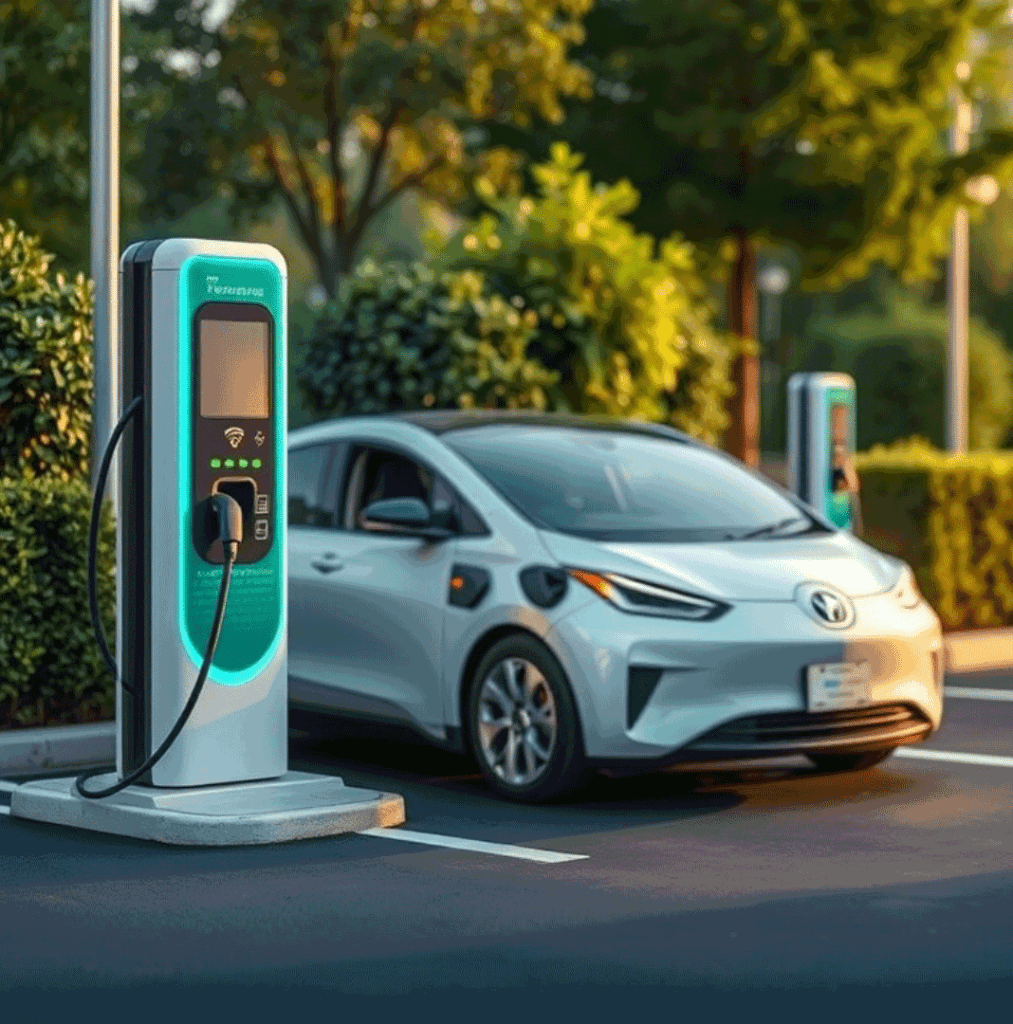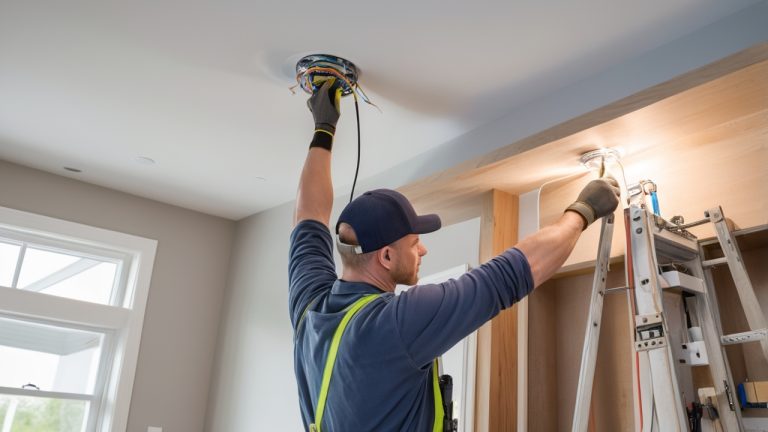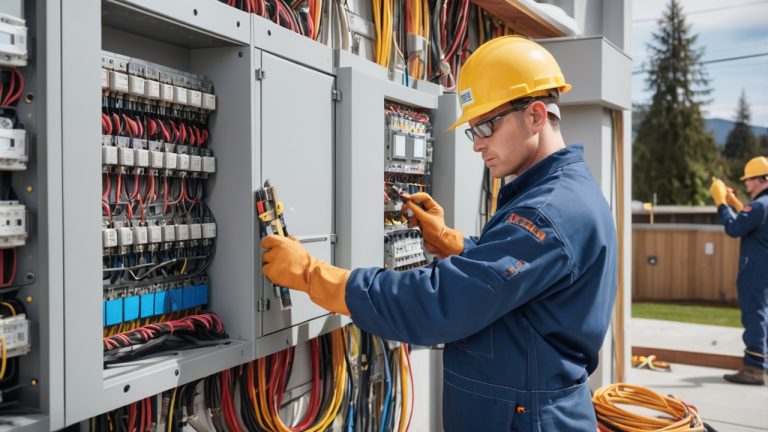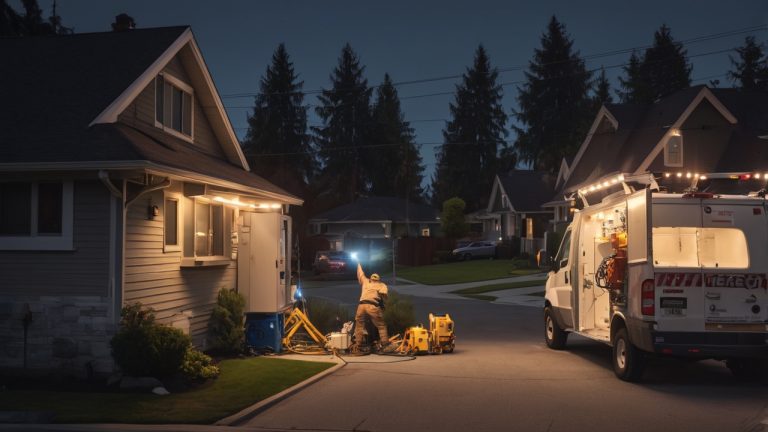How to Install an EV Charging Station at Home: A Comprehensive Guide
As electric vehicles (EVs) become increasingly popular, the demand for convenient charging solutions at home has surged. Installing an EV charging station not only enhances the ownership experience but also provides a level of independence that is highly valuable in today’s fast-paced world. If you’re contemplating installing a charging station at home, you’re in the right place. In this in-depth guide, we’ll explore everything you need to know about the installation process, costs, and the overall benefits of having an EV charging station at your residence.EV charger installation
The Growing Need for Home EV Charging Stations How to Install an EV Charging
EV charger installation In recent years, the number of electric vehicles on the road has skyrocketed, driven by advancements in technology, increased environmental awareness, and government incentives. Have you noticed how many charging stations are popping up in your area? While public charging stations are becoming more widespread, having a dedicated EV charging station at home offers unmatched convenience. How to Install an EV Charging Imagine arriving home after a long day, plugging in your vehicle, and knowing it will be fully charged by morning. This convenience is not just a luxury; it’s a lifestyle change that many EV owners are embracing.
How to Install an EV Charging Moreover, the ability to charge your vehicle at home can save you time and money in the long run. Instead of making trips to public charging stations, you can charge your vehicle overnight or during off-peak hours when electricity rates are often lower. How to Install an EV Charging This flexibility can lead to substantial savings on your electricity bill, making the initial investment in a home charging station worthwhile.
Types of EV Charging Stations
How to Install an EV Charging Before diving into the installation process, it’s essential to understand the different types of EV charging stations available. The two main types are Level 1 and Level 2 chargers.
2.1. Level 1 Chargers
How to Install an EV Charging , Level 1 chargers are the most basic type, utilizing a standard 120-volt outlet. These chargers are typically included with the vehicle and can be plugged into any regular household outlet. While they are the most affordable option, they also have the slowest charging speed, adding about 3 to 5 miles of range per hour of charging. How to Install an EV Charging ,This means that if you rely solely on a Level 1 charger, you might find yourself waiting a long time for a full charge, especially if you have a longer commute or need to use your vehicle frequently.
2.2. Level 2 Chargers
How to Install an EV Charging , Level 2 chargers are a significant upgrade, using a 240-volt outlet to provide a much faster charging experience. How to Install an EV Charging, These chargers can add anywhere from 10 to 60 miles of range per hour, making them the preferred choice for most EV owners. While the initial cost of a Level 2 charger is higher, the time saved during charging is invaluable for those who rely heavily on their vehicles.
Have you thought about how often you drive and how quickly you need your vehicle charged? If you frequently use your EV for commuting or long trips, investing in a Level 2 charger is likely the best option.
Evaluating Your Home’s Electrical System
Before installing a charging station, it’s crucial to assess your home’s electrical system. Have you checked the capacity of your electrical panel? Older homes may not have the necessary capacity to support a Level 2 charger, which often requires a dedicated circuit. An electrician can help evaluate your current setup and determine if upgrades are necessary.
3.1. Upgrades to Consider
How to Install an EV Charging , If your home’s electrical system is outdated, you may need to upgrade your electrical panel or add a new circuit breaker to accommodate the charger. This can add to the overall installation cost, but it’s an essential step to ensure safe and efficient charging.
Additionally, consider the location of the charging station. Ideally, it should be installed close to your parking area to minimize the distance the electrical wiring needs to travel. This can help reduce installation costs and improve safety.
The Installation Process
Once you’ve chosen the type of charger and assessed your electrical system, it’s time to move on to the installation process. While some homeowners may be tempted to tackle this project themselves, hiring a qualified electrician is highly recommended.
4.1. Finding a Qualified Electrician
Look for electricians who have experience with EV charger installations. They should be licensed, insured, and knowledgeable about local codes and regulations. Ask for recommendations from friends or family, or check online reviews to find a reputable contractor.
4.2. Installation Steps
The installation process typically involves several steps:
- Site Assessment: The electrician will assess your home and determine the best location for the charger.
- Electrical Panel Upgrade: If necessary, they will upgrade your electrical panel to handle the additional load.
- Wiring: The electrician will run the appropriate wiring from your panel to the charging station location.
- Mounting the Charger: The charger is securely mounted on the wall or a pedestal, depending on your preference.
- Testing: Once installed, the electrician will test the system to ensure it operates correctly and safely.
Each of these steps is crucial to ensure that your charging station is installed correctly and operates efficiently. Have you thought about how important it is to have a professional handle such a significant installation?
Costs Associated with Installing an EV Charging Station
The cost of installing an EV charging station can vary widely based on several factors, including the type of charger, installation complexity, and any necessary electrical upgrades. On average, you can expect to spend between 500and500 and 2,500 for the entire installation process.
5.1. Breakdown of Costs
- Charger Cost: Level 1 chargers can range from 300to300 to 600, while Level 2 chargers typically cost between 500and500 and 1,500.
- Installation Labor: Labor costs can vary depending on your location and the electrician’s experience, typically ranging from 50to50 to 100 per hour.
- Electrical Upgrades: If your electrical system requires upgrades, this can add an additional 500to500 to 1,000 or more to your total cost.
It’s essential to get detailed estimates from multiple contractors to ensure you are getting a fair price. Have you budgeted for these potential costs, or are you still in the planning stages?
Long-Term Benefits of Installing a Home EV Charger
Investing in a home EV charging station offers numerous long-term benefits that go beyond the initial installation costs.
6.1. Convenience and Independence
Having a charging station at home means you can charge your vehicle at your convenience, without the need to search for a public station. This independence can significantly enhance your overall EV ownership experience.
6.2. Cost Savings
Charging your EV at home is generally cheaper than using public charging stations. Many utility companies offer special rates for EV charging, especially during off-peak hours. By charging your vehicle overnight, you can take advantage of these lower rates and further reduce your energy costs.
6.3. Environmental Impact
Switching to an electric vehicle and using a home charging station contributes positively to the environment. Electric vehicles produce fewer emissions compared to traditional gasoline-powered vehicles. Additionally, if you use renewable energy sources, such as solar panels, to charge your EV, you can significantly reduce your carbon footprint. Have you considered how your choices can impact the environment?How to Install an EV Charging
Personal Experiences with EV Charger Installations
Reflecting on my own experience with installing a home EV charger, I can attest to the many benefits it brings. Initially, I was hesitant about the costs and the installation process. However, after conducting thorough research and consulting with professionals, I realized how valuable this investment would be.How to Install an EV Charging
One memorable moment was when I finally plugged in my EV for the first time. The satisfaction of knowing I could charge my vehicle conveniently at home was exhilarating. Have you had a similar experience with home improvements or installations that transformed your daily routine?How to Install an EV Charging
Future Trends in EV Charging Technology
As electric vehicles continue to evolve, so too do the technologies surrounding charging stations. Innovations in charging technology are on the rise, and the future looks promising for EV owners.
8.1. Smart Charging Solutions
How to Install an EV Charging , Emerging smart charging technologies allow users to monitor and control their charging sessions through mobile apps. This capability enables users to optimize their charging times based on electricity rates and usage patterns, leading to further cost savings.
8.2. Integration with Renewable Energy
The integration of home charging stations with renewable energy sources, such as solar power, is becoming more common. How to Install an EV Charging As technology advances, homeowners will have even greater opportunities to maximize their energy efficiency and reduce their dependence on fossil fuels.
Conclusion
Installing an EV charging station at home is a smart investment that offers convenience, independence, and long-term savings. By understanding the different types of chargers, evaluating your home’s electrical system, and working with qualified professionals, you can enjoy the many benefits that come with having your own charging station.How to Install an EV Charging
If you found this article helpful, please share it with friends and family. Your experiences and insights about home charging installations are valuable, and we encourage you to discuss them with us. Additionally, don’t forget to explore other articles on our site for more information on electric vehicles and charging solutions. Together, we can navigate the exciting world of electric mobility!








